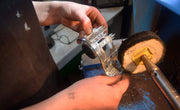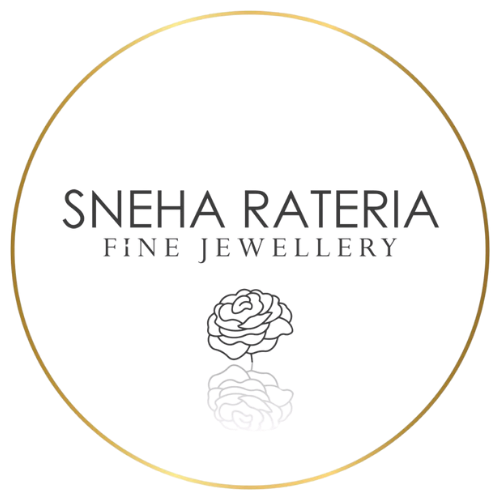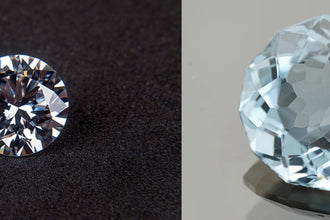
Jewellery needs polishing! Have you sent them out yet?
All that dazzling bling and heart-warming shine is what every woman craves for!
Let’s talk about jewellery now!
(internal laugh!) Of course this is about our good old shiny friends we all cherish to adorn ourselves with- jewellery!
Let’s face the real issue here!
The shimmering pieces of even the finest work of craft will get dull over time no matter how good the quality or condition you’ve kept them in.
You might’ve heard of jewellery polishing and how it is important for your jewellery’s health. If no, then we have a quick guide for you on the matter right here! As at Sneha Rateria, we cater the practice of jewellery polishing among crafting the most exquisite jewellery pieces you will ever see, we can gladly help you out with this!
What is Jewellery Polishing & how is it done?
Jewellery polishing is basically treating a piece of jewellery with suitable polishing compounds via various stages including cleaning, cutting and polishing. The process of jewellery polishing is essential to either restore dull items to their former glory or enhance the detailing on the final item.
Here is how jewellery polishing is done:
- Initial cleaning
- Cutting
- Steam cleaning
- Polishing or colouring

Cleaning
Based on the type of jewellery, a chemical cleaning solution is prepared in a jewellery cleaner equipment and the jewellery is soaked in it. It is done to get rid of dirt particles from the surface.
Cutting
Now that we have a clean piece to work with, the next step is to take care of scratches or any abrasions on the jewellery. This is done in a high speed spinning wheel.
Steam cleaning
The scratch-free jewellery item is next cleaned under a strong blast of steam. This further removes any residual from early treatments and brightens up the jewellery.

Polishing (Colouring)
Finally the jewellery is then polished with a polishing compound that adds gloss and shine to the item.
*For cutting and polishing, certain compounds are used by professionals:
- Cutting compound: Brown ApolloTripoli (traditionally used), Menzerna 456G.
- Polishing compound: Rouge, Lea FF9, menzerna M5 or P175.
Many jewellery owners prefer to clean their jewellery at home with easily available home products. This is a quick fix but doesn’t last for long. Professional artisans such as at Sneha Rateria’s, are highly skilled to treat your jewellery with the care they deserve! It is highly recommended not to try jewellery polishing on your own unless you want your precious jewellery to lose their glory.
Now that you are a bit clear on the steps of jewellery polishing, here are the kinds of polishing that are practiced by professional jewellers:
Types of jewellery polishing can be classified as Polishing with and without chemical colouring process:

Hammered finishing
Taking the most traditional approach, Hammered finishing is done with a special polished hammer by artisans. The cleaned jewellery item is tapped skilfully with a polished hammer and treated for further polishing.
There is another modification of the Hammered finishing called Stipple finish that creates pits or certain depressions on the metal that is deliberately done to achieve a certain look. This type of finishing is quite uncommon but is widely used to enhance detailing of jewellery with stones.
High shine/ polish finishing
The most commonly heard among other types of polishing, you must have seen a description somewhere that goes “Gold high polish finish ring” or “Gold matte finish ring.” High shine or high polish finishing is done in a high speed polishing wheel that removes abrasions on the metal surface.
Matte finishing
To acquire matte finishing for obviously that sleek and organic look, the metal is polished in a certain type of wheel equipment with aluminium oxide bearing polishing papers. A rotary tool is used by some professionals for the same purpose. Sandblasting is another method to acquire similar results.
Matte finishing can be of two types: Satin and Brushed finishing. Based on the choice of client or jeweller’s craft, these finishing are done to obtain a satin smooth or rustic metal surface respectively.
Now coming to the jewellery finishing with chemical application, there are three more kinds of jewellery polishing:
- Oxidation
- Plating
- Enamelling
Oxidation
Probably you’re already in love with this one! Oxidized jewellery is the latest market rave! Goes with every style and look! Here is how it’s done.
The jewellery is treated with potassium sulphide that causes the metal surface to develop silver sulphide that gives the metal a dark appearance. This deliberate tarnishing is only at the surface of the jewellery and do not hinder the overall quality of the metal.
Plating
A thin coat of precious metal is applied on top of the base metal. The top plating metal can be gold, Rhodium or Silver and the base metal can be Gold, white Gold, Platinum, etc.
Plating is acquired by treating the base metal with metal salt-water solution in a tank with electrodes. Fusion of the two metals is then accomplished under the electrical currents.

Enameling
Enameling is done to impart a painted look to the metal surface. Here powdered glass is fused to the jewellery surface in a kiln, making it coloured and pretty! Enamelling can bring out versatile colours on different kinds of base metals. The final contrasts of the colours are mesmerizing!
Thinking of getting your jewellery polished?
Time and conditions are not so kind on the appearance of jewellery items. If not cared and treated well, they are eventually bound to lose their shine over time.
Home polishing is nice but not the solution! Your jewellery needs professional cleaning and polishing on periodical basis that Sneha Rateria can take care for you!
Our skilled artisans and jewellers use professional tools and polishing compounds to preserve the original look of your jewellery.
We have an amazing collection of handcrafted jewellery items that are crafted with best quality metals. Visit the website and get the exact item that you chose from our shopping window!
If you have any questions, please email me at sneha.rateria@gmail.com.
XOXO,
Sneha







